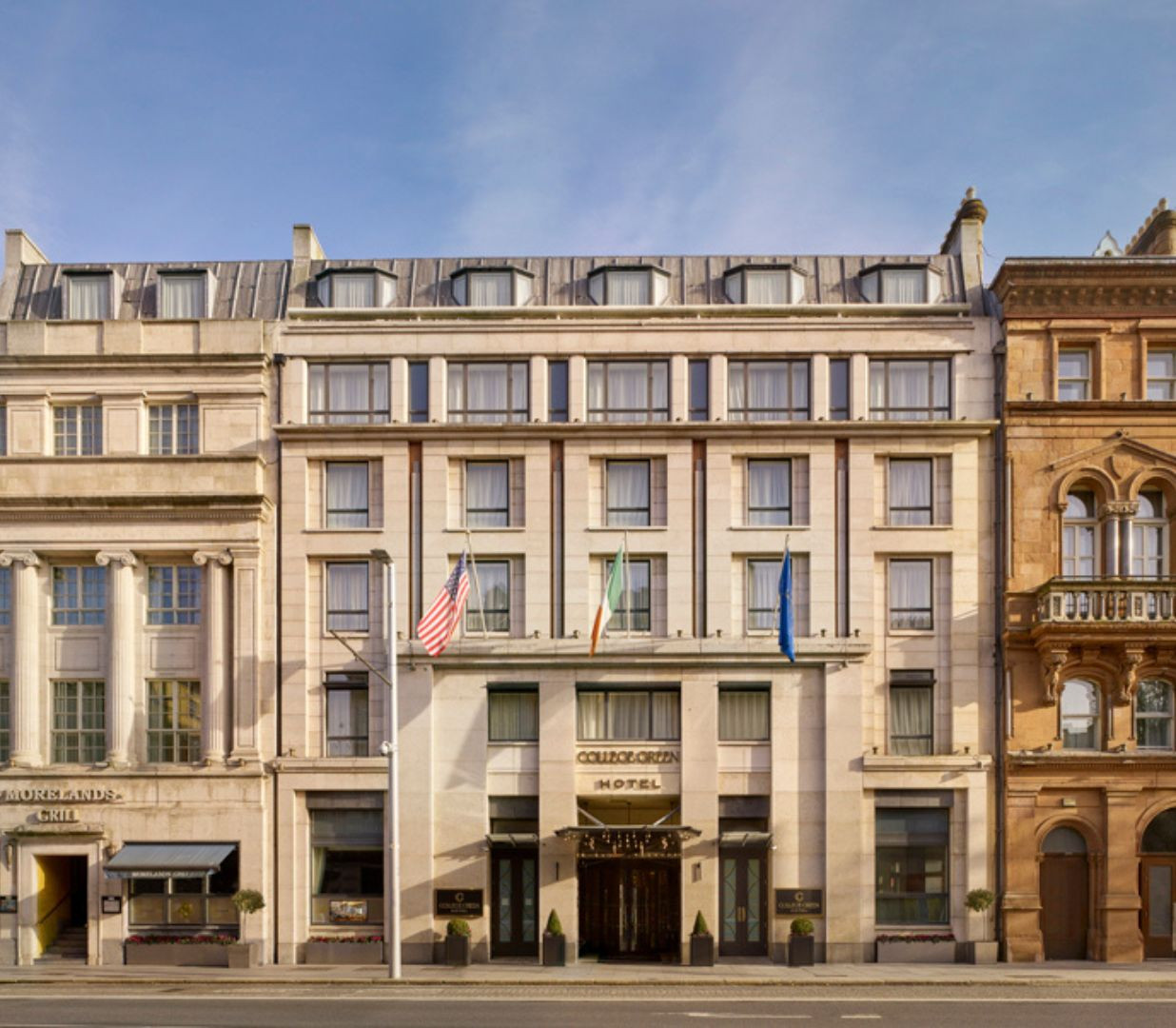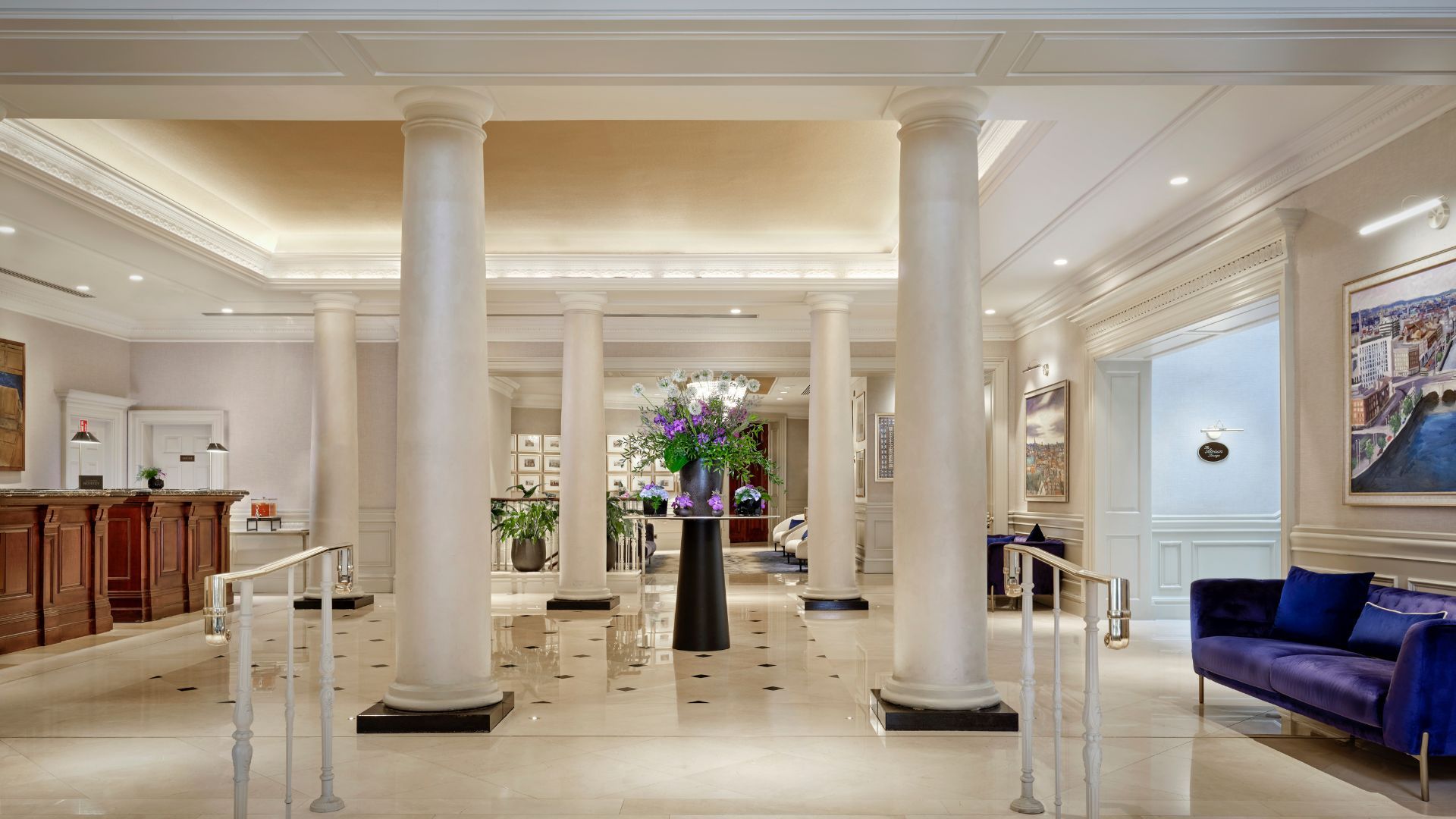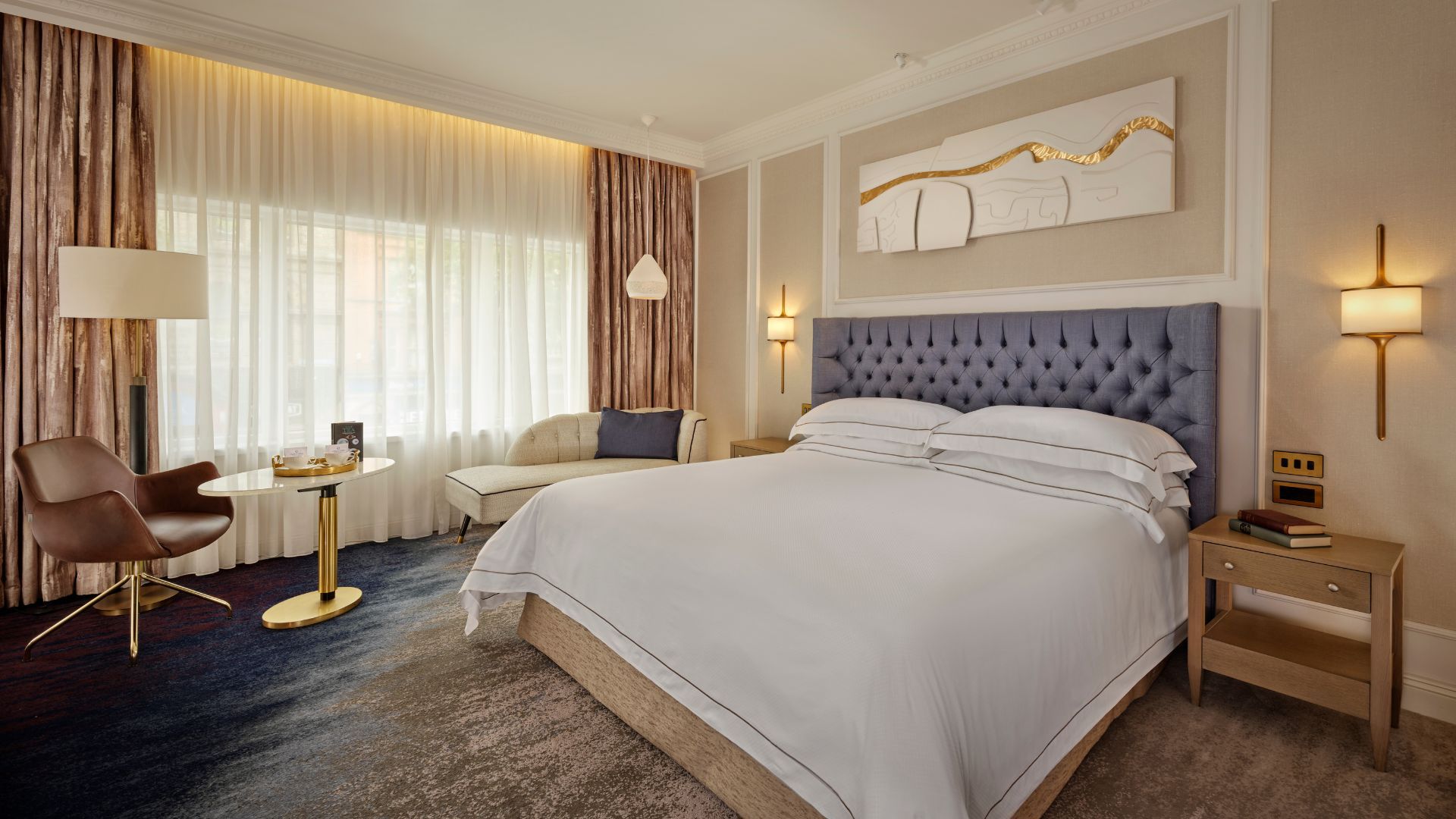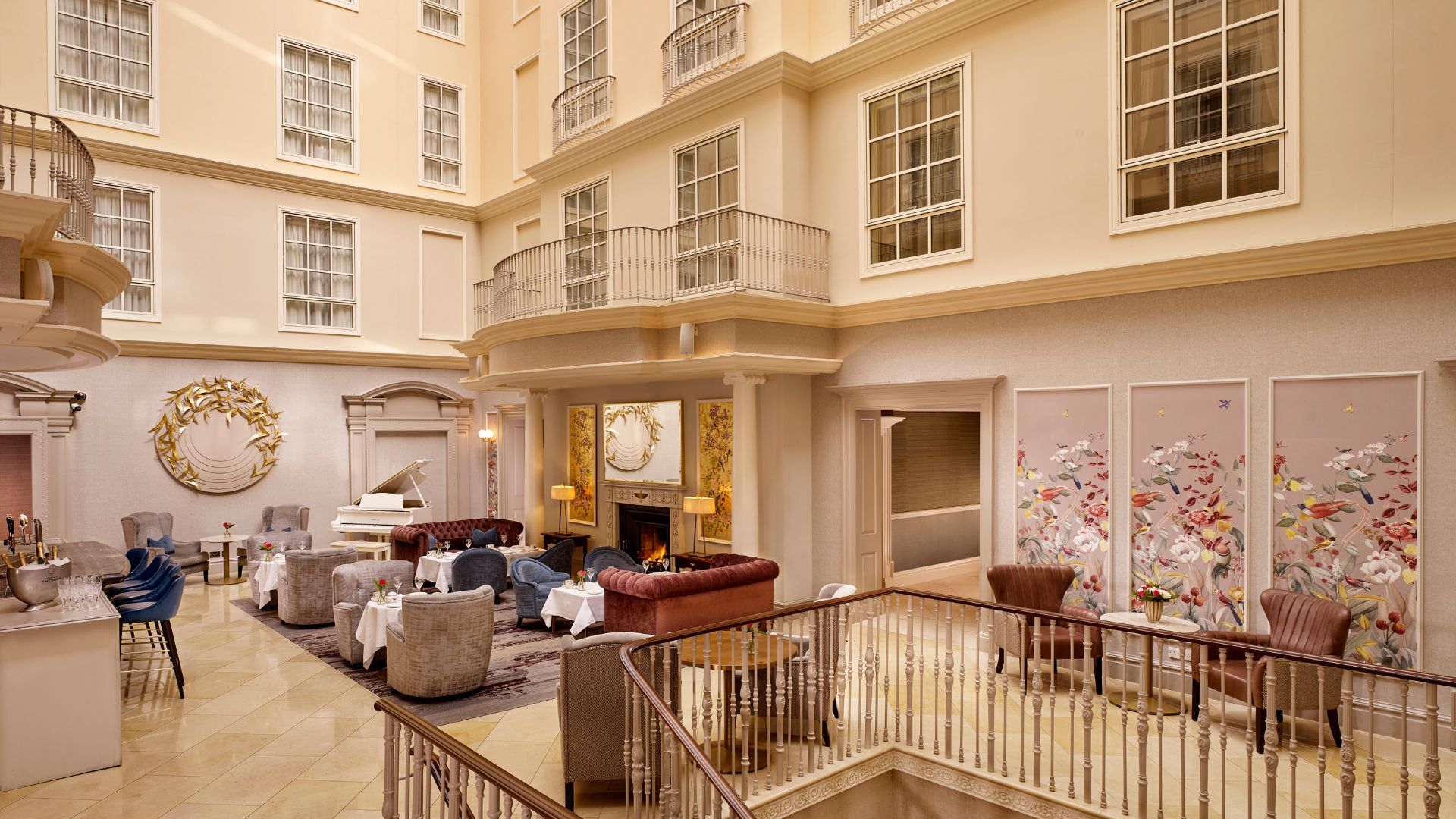The unique buildings which comprise our hotel – or compose it – stand proud alongside Trinity College. Each tells a different but complementary tale. Formerly the headquarters of three separate banks, our buildings evolved together, watching over the momentous events that shaped the city. Dublin is today a major European capital where international service with precise attention to detail is delivered as standard. The College Green Hotel Dublin has grown in the midst of our city, honouring the past but welcoming the future. This is the story of where we come from.
Timeline
Early history
The future site of The College Green Hotel Dublin, once part of Dublin Bay, is reclaimed from the sea in medieval times.
19th Century
1800s
Westmoreland Street is developed as a Georgian terraced street. A fashionable area near Trinity College and the Houses of Parliament, it was primarily residential until undergoing rapid commercialisation in the 1850s.
1805
The Wide Streets Commission transforms the heart of Dublin. Built to connect the rich, leafy homes of Southside high society with its counterparts in the Northside, Westmoreland Street becomes a conduit for trade and commerce.
1863
Construction starts on the headquarters of the Provincial Bank of Ireland. Devised by Irish architect William G. Murray, the design comprises a seven-bay main building over three storeys with pediment and columns. Its stunning features are reflected in the final budget, which is twice the estimate.
1865
Signalling Dublin’s emergence as a significant port, the Dublin Ballast Board erects a Time Ball on the roof of its office on the corner of Westmoreland Street and Aston Quay.
1868
The magnificent new headquarters of the Provincial Bank of Ireland opens to the public.
1875
Architect Thomas Newenham Deane designs the Scottish Widows building. Its magnificent features and central location indicate the success of Dublin’s financial services sector at the time. Until recently, a branch of Allied Irish Bank occupied this building.
20th Century
1910
The College Hotel and Vegetarian Restaurant opens on College Street beside the Provincial Bank of Ireland. Exceptionally early for a vegetarian restaurant, Dublin City always bucked the trend!
1922
Westmoreland Street is immortalised in James Joyce’s Ulysses.
1935
The Pearl Life Assurance building is designed by Dublin based architect Arnold F. Hendy. Art Deco in style, the building exhibits an elegant façade of Greek columns framed by strict rectangular panels. Standing at the corner of Westmoreland Street and Fleet Street, its bronze name plaque below the bronze roofed cupola can still be seen today.
1966
The resplendent Banking Hall becomes a branch of the newly formed Allied Irish Banks, a new company that merged the Provincial Bank of Ireland, the Royal Bank of Ireland, and the Munster and Leinster Bank. All original features are kept, ensuring customers know that this branch has historical significance.
1999
All three buildings are carefully restored and reimagined as part of The Westin Hotel’s development. All original features are returned to their former glory.
21st Century
2023 – Today
Our hotel relaunches as The College Green Hotel Dublin, a proud member of Autograph Hotel Collection within Marriott International. The hotel is owned and managed by MHL Hotel Collection, a group of unique and individual hotels located throughout Ireland. With the promise of luxury and five-star hospitality, The College Green Hotel welcomes guests from all around the world.












